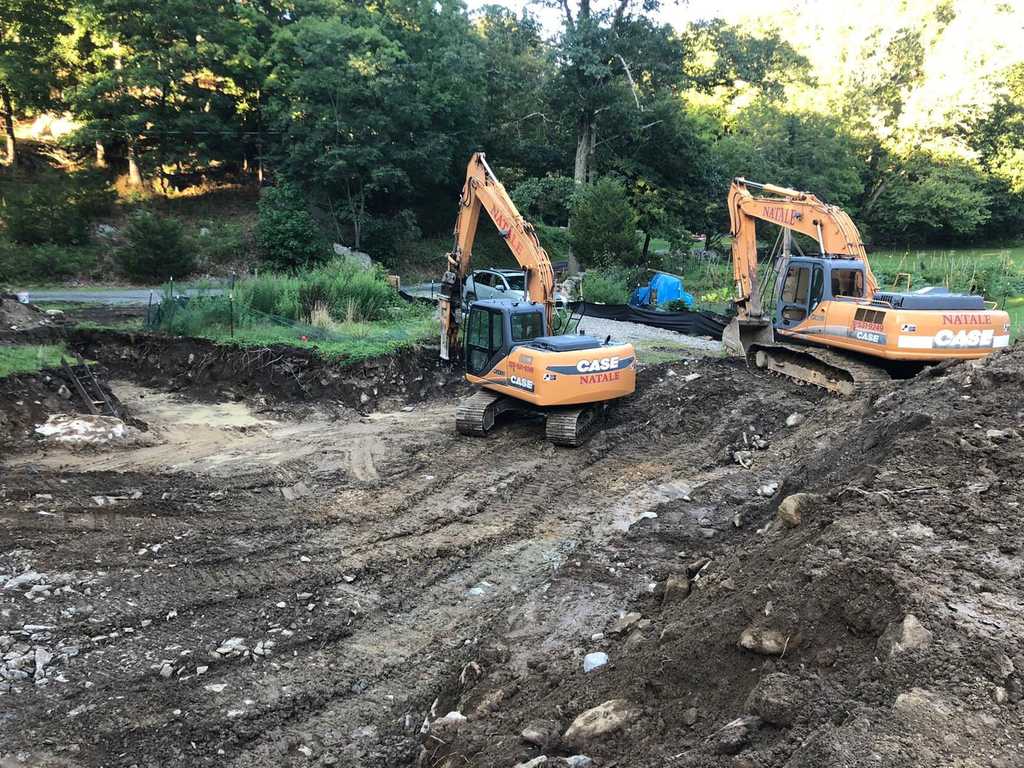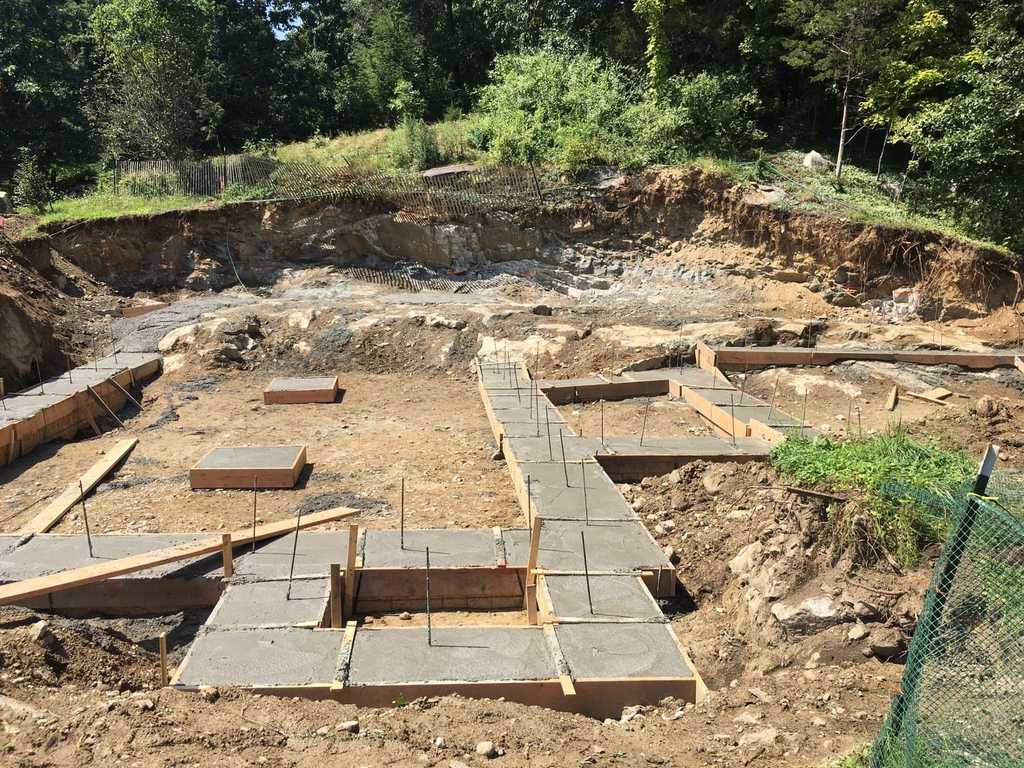VAKOTA’s Matt Kocyba is currently working on an innovative residential project in Greenwich, Connecticut, with clients who are passionate about eco-friendly living and sustainability. Our eco approach to the design is the number one priority throughout each decision-making process.
Initially, we made every attempt to restore the original house on the property. However, when the structural engineer surveyed the foundation, we discovered that it could not be salvaged.
“I had a full design plan mapped out,” Matt explains. “We were going to take down the newer portion of the house and restore the original early 1800s structure, including an original area we were going to use as a new cold cellar, but sadly, the original timber frame was rotted at the base at each structural member, due to the house being abandoned and not maintained for years.”
“The upside of that of course is that we’ve been able to create an entirely new home from scratch, affording us the opportunity to choose the very best in eco-friendly and sustainable materials. We’re bringing in innovative eco-technology, as well as salvaging materials from the site to build the house in the greenest way possible. It is very exciting.”
Finding the perfect position
Built abutting Montgomerey Pinetum Nature Preserve, the house will sit on a 2-acre farm and it is especially important to the owners that the flora and fauna are disrupted as little as possible. With this in mind, the new house is being built in the same location as the original building to ensure minimal disruption to the surrounding earth.
“Because of the wetlands in the area, we were limited as to the precise location of the new home, therefore it made perfect sense to stay with the same ground coverage. It’s an L-Shaped lot, and the setback line pins us to this one area, so we don’t want to cause any disruption to the natural habitat. We preplanned the design to take full advantage of the long side of the main house and oriented that side to face true south – the perfect place to put the solar panels so that they get maximum sun exposure year round.”
The solar panels will be placed on the south side of the main house roof, as well as east facing side of the garage roof, with the consideration of using them to also power an electric car charger in the garage in the future.

In order to calculate where the sun would be throughout the day during any given season, Matt did the complex calculations to work out the perfect latitude and longitude for the property within the confines of the wetlands.
“In winter you want the roof pitch a little steeper because the sun drops in the sky. Whereas in the summer, the sun is higher so you can have a lower pitch. So, I did the math and calculated the best pitch for proper exposure year-round.”
Choosing and using the right products
One of the key considerations when an environmentally-friendly home is selecting the perfect products – and for this particular project, Matt elected to design the house using Structural Insulated Panels (SIPs) and Insulated Concrete Forms (ICFs).

SIPs are constructed with two pieces of OSB plywood, sandwiching a polystyrene core – and that simple structure makes up the entire wall system. As the panels can be built up to 24ft long and 9ft tall, the first floor of the house requires roughly six panels to complete.

“We’ve chosen the SIPs to minimize infiltration of the elements through cracks, seams or studs. In conventional framing, you have a 2×6 stud every 16 inches on center – and each of these offers a chance of infiltration. Heat or cold can get in through the stud every 16 inches. But with the SIPs, there’s a continuous thermal barrier throughout that’s even more effective than spray foam insulation.” Matt explains.
“They’re custom built from the supplier, so you need to provide the window schedule for them to pre-cut the holes for the windows – it’s very efficient which allows for minimal amount of waste – if any!”
The use of SIPs requires a lot of pre-planning and preparation – but once they’re on site, they’re completely pre-made, and an entire floor could be built and installed in a day.
The ICFs similarly provide a continuous insulation on each side of the foundation walls as forms which remain in place. The insulation is critical in this instance, since we have a heated concrete slab being constructed in the seasonally cold northeast environment.
Using the SIP roof panels also makes for a completely tight envelope which helps to create a really consistent ambient temperature, with very little intervention from the outside elements, including sound. That said, Matt has incorporated those too…
This is an outstanding project and one of which we are enjoying working on immensely. So much so, that we are going to share our design and build adventure over the coming weeks, with more detail on this innovative eco-house to follow. Watch this space!
Part 2 of our Eco-house series explores the methods of heating/cooling the space, as well as the use of on-site materials in the build.



